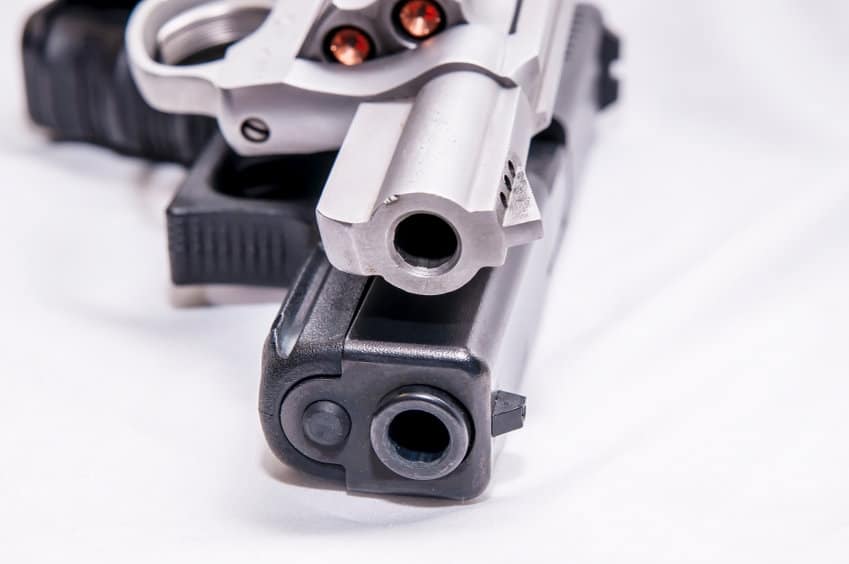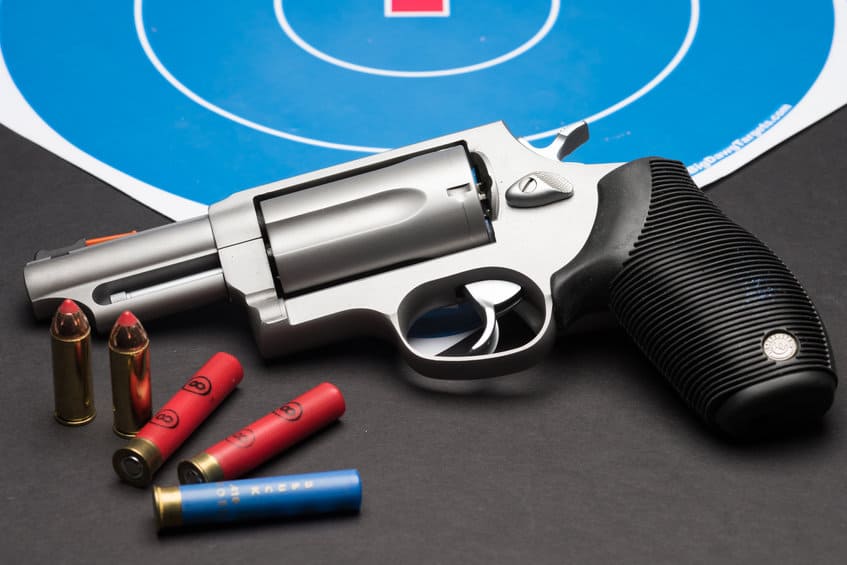It is that time of year again, when the seeds planted after the last frost have begun to (hopefully) grow into healthy plants. These tender greens (and later the fruits or veggies) are irresistible to the local wildlife. Fencing the garden plot and using raised beds can help preserve your crop, but sometimes a better solution is needed for tenacious critters. That solution is a garden gun.
What is a garden gun? In Europe, a garden gun was traditionally a small-bore shotgun or rifle of limited range and power suitable for killing rodents or birds at close range. Traditional European garden guns include the 9mm Flobert rimfire shotgun and the 4mm – 8mm Flobert rimfire rifles. The .22 Long Rifle and .22 Magnum (rifle and shotshells), the .410 shotshell, and air rifles are the more common rounds used in the U.S.
The draw to these weapons had been that until recently, they were not subject to many of the firearm regulations in most European countries due to the low power of the cartridges. Sadly, these nations now view these small cartridges as firearms, and many of these little weapons have found their way over here because of owners not wanting to deal with regulations.
Table of Contents
.22 Rimfire
The most common garden guns in the U.S. are the .22 Long Rifle and its big brother, the .22 Winchester Magnum Rimfire. Both are well suited to pest control in most rural gardens. Since the capabilities of these two rifle cartridges are well known, we will focus on the shotshell versions here. CCI produces a .22 Long Rifle shotshell that holds 31 grains of #12 shot and exits the muzzle at 1000 feet-per-second. Their larger .22 Magnum shotshell fires 52 grains of #12 shot, and has the same muzzle velocity.
The .22 Long Rifle shotshell has been chambered in many specialized rifles over the years. The latest is Henry’s Garden Gun, a smoothbore version of their standard lever-action. Built with rifle sights, a fifteen-round capacity, and an attractive Black Ash stock, the Henry is a tool for suburban gardeners.
Marlin is the only company to make a .22 Magnum shotgun. Based on the standard .22 magnum action, the model 25MG had a smoothbore barrel and bead front sight. Produced from 1999-to 2002, it has become somewhat of a collectible for Marlin enthusiasts due to its scarcity.
Neither of these weapons will group very well with solid projectiles at more than fifteen-ish yards, but with shotshells, both will give decent patterns and take care of small pests with little worry about harm to your fence or neighbors.
The .410 Bore
Definitely the most powerful cartridge on the list, the .410 shotgun is more than capable of solving any garden pest issue. The tradeoff is more noise and the risk of damaging plants or nearby fences and buildings. While the ammunition can be expensive, the firearms can be inexpensive, with some single-shot varieties selling for under $200. .410 shells are going for over 20 bucks a box lately, but there are hand reloading kits available, and the .410 is cheap to reload.
9mm Flobert Rimfire
Firing a quarter ounce of shot at 600 feet-per-second, the 9mm Flobert rimfire is the smallest shotgun shell available in the U.S. today. Known as the No. 3 bore in the U.K., this little round can be found chambered in a number of European-produced bolt-action and break-open weapons and was produced in the U.S. by Winchester in the Model 36 bolt-action. Fiocchi produces the ammunition with shot sizes #6 through #9, and some other companies have sold slug-type shells with a solid lead ball for problems like woodchucks.
These weapons are quiet and a joy to shoot. The light charge and low velocity prevent damage to structures and make them perfect for suburban gardens where you do not want to wake the neighborhood every time you defend your green beans. A number of these guns were imported into the country recently, so they are easier to find and afford than they used to be.
Air Guns
Air guns are probably the most common garden gun used today. Quiet, powerful, inexpensive, and, in many countries, unregulated, air guns are often the ideal tool for the job when vermin are in the garden.
The primary air gun types are multi-pneumatic, pre-charged pneumatic (PCP), CO2, spring-piston, and gas piston.
The multi-pump will be familiar to anyone raised with a Crosman 760 or Daisy 880. These weapons have an integral pump handle used to build air pressure in the gun. Multi-pumps tend to be relatively powerful, but are not designed to hold air for days on end. This is a bit of a pain if you have a surprise pest to deal with and is the reason that I reach for my CO2 pistol more than my Sheridan rifle when the starlings are in my strawberry bushes.
CO2-powered air guns run off a cylinder of compressed carbon dioxide. While not designed to be left under pressure, CO2 guns can stay charged for months or years. This ready-to-go trait and low cost have made rifles like the Crosman 1077 and Beeman QB78 perennial favorites to keep near the back door or in the potting shed. Like the CO2 guns, a PCP gun is ready at any time. PCP guns are much more expensive than CO2 rifles but thet are found in calibers up to .50, and some are made as shotguns.
Lastly, let’s talk spring and gas piston guns. These break-barrel rifles are probably the most popular variety of air rifle available today. Some of these rifles exceed 1000 feet-per-second and have no trouble dispatching vermin. The main difference between the two is that the gas piston can remain cocked for long periods of time, but the spring guns must be de-cocked or fired within a couple of minutes to avoid damage to the spring. I like these rifles since I can keep a pellet in the barrel and only need to cock the weapon on the way out the side door.
Final Thoughts
While losing some of the fruits and vegetables of your labors to pests is to be expected, you do not have to let them steal from you with impunity. The humble garden gun, in its various forms will help you keep your garden safe, or at least let you get your green beans back in the form of red meat protein.
Until next time.




